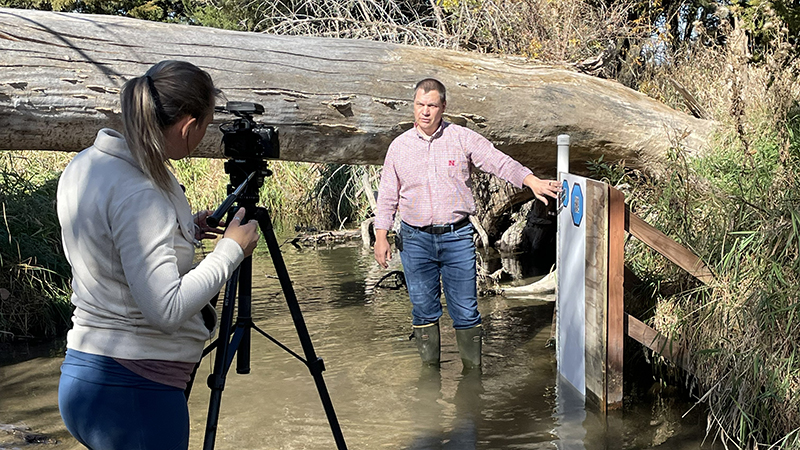
By Ronica Stromberg
University of Nebraska–Lincoln researchers have opened the gates on water research with the launch of GRIME AI September 16, 2025.
John Stranzl, a School of Natural Resources doctoral student advised by hydrology professor Troy Gilmore, developed the GaugeCam Remote Image Manager–Educational Artificial Intelligence software freely available on the GRIME Lab website. In just a few clicks, anyone can use the GRIME AI software to research water bodies that the National Ecological Observatory Network, PhenoCam and the U.S. Geological Survey monitor. The software streamlines access to about 1,000 cameras and their data drawn from recording water, plants and other parts of the environment.
Researchers can use images from their own camera networks to expand research opportunities even more. Those in the University of Nebraska system can combine the GRIME AI data with data drawn from the Platte Basin Timelapse photo network in the state. The Platte Basin Timelapse project has more than 70 cameras and has taken more than 5.5 million photographs of water and the surrounding landscape since 2011.
"When people see lots of time series of images, it raises questions, it opens up new ideas, and we're trying to give people the flexible tools to pursue research questions from across a variety of disciplines," Gilmore said.
He began work with Mary Harner, a communication and biology professor at University of Nebraska-Kearney, in 2020 to establish software that could use large photo networks for research. Ken Chapman, a former doctoral student, developed GRIME2 software on the GRIME Lab website to look at water levels. Stranzl, a nontraditional student with 35 years of experience in areas like software engineering, computer vision, robotics and machine learning, then developed the GRIME AI software launched this fall.
"Frankly, it's gone beyond what I originally envisioned because John Stranzl basically came in and just went with it," Gilmore said.
Stranzl said he created the software product to allow researchers to better spend their research dollars on carrying out the research itself rather than the "grunt work" of finding and cleaning data.
Read the rest of the story at https://snr.unl.edu/aboutus/what/newstory.aspx?fid=1292
See Troy Gilmore's talk about GRIME-AI at https://www.youtube.com/watch?v=nomVd2kvQeU